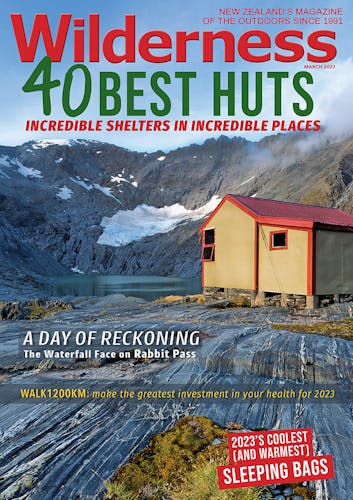Climbing Taranaki Maunga is not like running a marathon or taking a long bike ride. It requires specific training for legs, shoulders and body.
It’s one of New Zealand’s hardest day trips and training for Taranaki Maunga’s 2518m summit is not to be underestimated.
It’s a 6.3km hike to the top, and it’s steep and strenuous, taking up to six hours to ascend and four hours to descend.
According to a top Taranaki personal trainer, preparation and training is key to how much you’ll enjoy the trip.
And there’s a difference between just being fit and being mountain fit.
“You can be fit and strong but still struggle with the mountain because you haven’t done the repetition of climbing,” Micah Lindsay-Brown of White Wolf Health and Fitness says. “If you were a hill runner, that’s going to have some good carry over but if you’re a road runner or a biker on flat ground you have to change your training.”
Vital to avoiding injury is stability training, Lindsay-Brown says.
Stability training prepares your body for the uneven footing on the mountain and is especially important for the scoria section.
Lindsay-Brown does this with a balance ball and different exercises using it. She recently trained two women for the mountain and says calf and shoulder strength were a huge part of the process.
“In the past when they started their training they had issues with shin splints or calves or quads or neck pain because of packs, so my job was to get them really strong in those areas, so we did a lot of shoulder work, which is surprising but it really helps.”
Lindsay-Brown says always go for practise hikes in the footwear you will wear on the climb so your feet are used to them before the big day.
“Practise lots of little climbs. It builds confidence and the head game is a big part of it,” she says. “You don’t just want to do it, you want to cherish it as a memory.”

A few years ago, long time Taranaki guide Rob Needs polled his friends to see what was harder: climbing the mountain or running a marathon.
“All said a marathon is harder, but it’s up there with maybe a half marathon,” he says.
Needs, who runs Top Guides and a mountain shuttle service, says people should find the biggest, most gnarly and unattractive hills they can and climb them in preparation.
“All said a marathon is harder, but it’s up there with maybe a half marathon,” he says.
Needs, who runs Top Guides and a mountain shuttle service, says people should find the biggest, most gnarly and unattractive hills they can and climb them in preparation.
He mostly employs people to guide to the summit now but estimates he has summited “more than 20 but less than 100” times.
“I like to tell people the allure has gone but the truth is I’d have to put in 12 months training to be able to do it now,” he says.
Despite not being up the mountain as much these days, Needs has a vast knowledge and respect for it. Other than getting fit climbing horrendous hills, he says an important part of training is hydration, which starts before you even step foot on the mountain.
“You should be peeing as clear as you can the night before,” Needs says.
For the climb itself, Needs says to take three-litres of water and go prepared as for a day at the beach and a day at the ski field.

While the most popular month to climb is February, Needs says the end of March is the best time because the days are shorter and the intensity of the heat has gone.
“Covering your skin is the best way to protect yourself as exposed skin will get roasted,” he says. “I’ve seen the most insanely burnt people coming off the maunga.”
He recommends investing in sturdy, well-fitting footwear, pole, and gloves for rock scrambling protection.
Doing research on the cultural aspects of Taranaki Maunga should also be part of training, says Needs.
In Māori culture, the mountain is considered tupuna (an ancestor) so out of respect climbers should not stand on the highest point, known as the summit stone, as this is considered the same as standing on the head of an ancestor. No cooking, toileting, or camping should take place in the summit area either.
“The disrespect shown to our tupuna is immense – some on purpose, some on misunderstanding.”
The biggest mistake Needs sees people make is underestimating the mountain.
Climbers often make the mistake of relaxing when they get to the top but most accidents happen on the descent, he says.
He urged climbers to be careful and turn around if they needed to.
“Getting to 2518m is not compulsory, getting home to your whanau is compulsory.”








